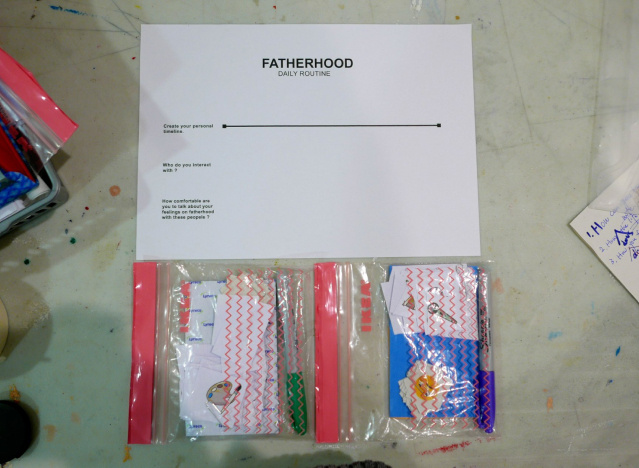
Becoming a father is a profound experience but many dads have found that there are aspects of preparing for fatherhood that have not been as rewarding as they’d been led to expect. Many of my friends have been new fathers and from hearing about the excitement and challenges they faced, it seems like an area that is rich in opportunities for improvement. We were a team of five designers and we were hungry to learn more.
Our aims
We wanted to assist fathers who might have barriers in the way of developing a close bond with their family. Dads have a strong desire to provide any assistance they can to their family – often to their own detriment – so we sought to find out how where there might be obstructions to building a healthy, active role in the participation of a pregnancy.
We tackled this topic in the knowledge that it was was poorly understood and that there were unrealistic and outdated cultural expectations around fatherhood. We used expert interviews, engagement tools and desk research to interrogate this.
Visiting institutions
We visited a number of different institutions in order to get a sense of what the spaces that a new family might visit are like. We visited: Royal Infirmary Maternity Ward, New Victoria Hospital and Queen Elizabeth Hospital.
When looking at the available materials around parenthood, we quickly found that much of it portrayed mothers only. It is appropriate that mothers are centred in the material but there was a distinct lack of complementary material for fathers. In interviews, we heard that this was noticed and was having a detrimental effect upon men’s perceived role. When attending these supporting institutions, these materials were implicitly insinuating that parenthood is for mothers only.
Mens antenatal classes
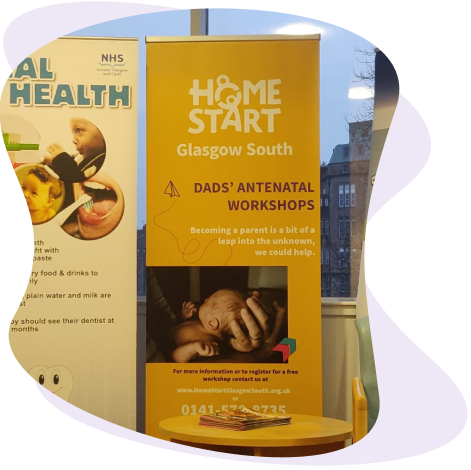
Speaking to the hosts of an antenatal class for fathers provided us with insight into what it takes to bring dads to a class and what they’re looking for when they attend a class like theirs. They were trying to “fit what the NHS do in four weeks into two hours”.
They described a huge range of issues facing dads. One of the challenges that stuck out was the fear of ignorance. They specifically offer people the opportunity to ask what dads might think are “stupid questions” before attending the class so they can answer them in person during the class with everyone present. They described a situation where many dads have very little interaction with children until they have their own. They were there to help prepare them in the absence of guidance from family and friends.
For those without those classes, the sense seemed to be – “no one else seems to have this problem.” There are few support networks to encourage that type of communication amongst fathers. There is also a feeling of inadequacy when becoming frustrated with their children. We were hearing they were struggling because they’re having very negative thoughts about their child and they don’t have a support network through which to vent and hear that frustration is normal. There was also a sense that, in certain contexts, they might be seen as threatening as men are often portrayed as a danger to children. This makes negative feelings tricky to navigate.
Attending the antenatal class
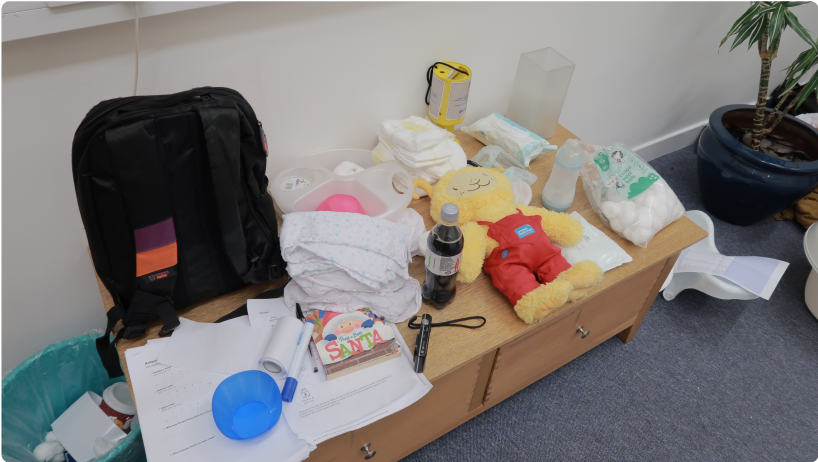
We quickly learned that storytelling was key to learning. Stories were shared to demonstrate how others had approached different problems and situations. We learned how transient the knowledge around being a parent is. NHS recommendations seemingly change often. So, they shared a lot of up-to-date contemporary approaches to activities and products like formula, re-usable nappies and infant psychology.
The class is really playful and fun. It served a social function as well as an educational one. I found this odd because these classes were infrequent. This was a voluntary class so the dads who were there had taken it upon themselves to attend this. Normally they would have to take unpaid leave to go to a daytime antenatal class and they might be the only man there. The infrequency of the session suggested that there weren’t many opportunities for this group to socialise despite having so much in common.
There was an emphasis on asking for help from others whether that be family or friends but I didn’t get a strong sense that there was a network within the class other than a large messaging group that sounded like it didn’t get used very much.
These dads clearly had things to offer each other and enjoyed each other’s company but there didn’t seem to be many opportunities to develop those relationships.
Engagement tools

After the antenatal class we got a chance to chat to the participants and asked them to map out their day using an engagement tool. We wanted to find out how an expecting father experiences fatherhood in a given day. Through mapping the people they spoke to, the places they attended and the hobbies they had, we hoped to find out more about the communication networks and environments that might help us understand how a dad experiences fatherhood before becoming a father.
One of the dads described a really supportive work environment. He painted a picture of what a supportive society might look like. He worked somewhere with lots of parents who were willing to regularly discuss what it means to become a father and the things that he’d have to learn. His family were around regularly and his work allowed him the flexibility he needed.
Despite this, he said that his friends would often switch off when he started talking about fatherhood. Afterwards, I started thinking about manhood and its relationship to care and again about the portrayal of men in society. For the same reason that many men don’t interact with children until they have them, they also don’t talk about children. It is not a normative role and the skills to discuss that time in a person’s life might not have been socialised.
Pregnant women are asked to attend antenatal classes and attend health check-ups which is great for creating a regular sense of progress and builds towards adopting the role of a parent. I get the impression that a dads’ role isn’t reinforced and that there are fewer opportunities to build social bonds with others.
Even with that network, the education around becoming a parent is procedural and doesn’t take into account the social or psychological effects of having a baby. The way a relationship between a couple changes is radical and from the interviews we conducted, it sounds like many families are unprepared for the change that takes place. We heard a lot about the extra stresses on people’s relationships in the build up to becoming parents. It’s a transition from a couple into a family with different roles and responsibilities. Because men aren’t taught these skills, they might not be able to support their partner in the ways that they’d like.
Family learning becomes essential as a means of preparing couples for new children. It also offers an opportunity for couples to communicate around complex topics which was described as essential during the antenatal class.
Building a toolkit
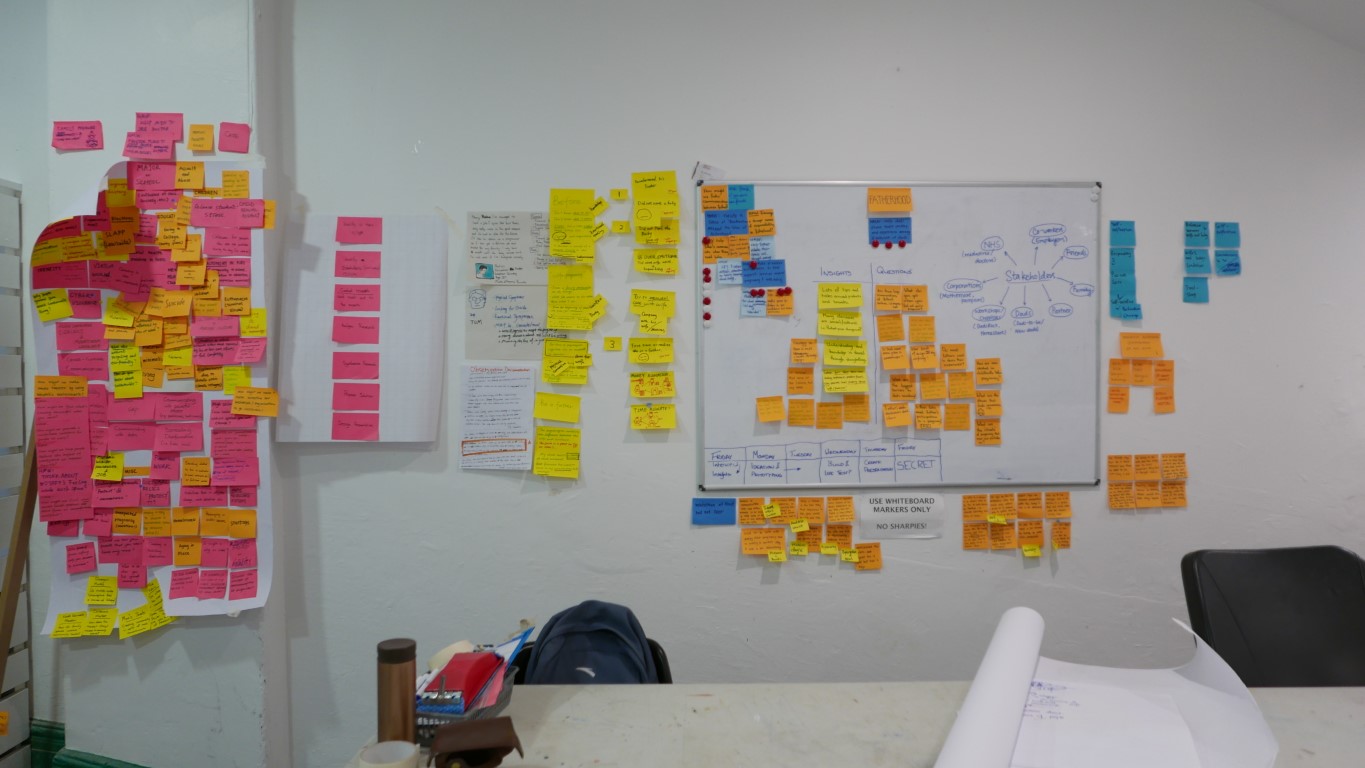
After exploring a huge range of options, we decided to create a toolkit. We aimed to make something that could help a family prepare while including and representing dads. We made something that was mainly focused on men and their experience — almost an engagement tool in itself. If we were to take this further, we’d need to develop a more holistic picture of a new family by conducting further research around the mother, extended family and friends.
With this, we wanted to tackle some main points. We tackled: communicating around complex topics; representing dads in caring roles; building support networks; relieving stress after the baby comes; offering opportunities to socialise and articulating what kind of father you’d like to be. These seemed to be the key themes in our research, so we wanted to address them directly.
We were heavily inspired by the baby boxes provided by the Finnish and Scottish Governments to families with newborn babies. We liked these because they don’t require time for people who are time-short and we can provide a number of activities which can be used anytime after five months into the pregnancy.
Design principles
- Remove barriers to fathers’ participation within a family
- Make events, checkups and appointments easy to find
- Encourage dads to build confidence through parental experience
- Promote extending friends and family networks
- Encourage boys, young men and adult men to participate in parenthood
- Show men in caring roles



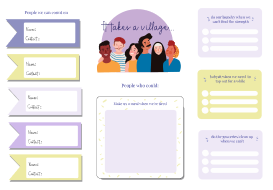

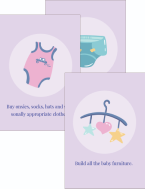
Big conversations
A set of flashcards that can be picked up at any time. The couple can discuss the contents of the card to better prepare and prime the couple for the baby’s arrival.
This was targeted at fostering clearer communication between a couple and allowing difficult conversations to happen sooner in the pregnancy.
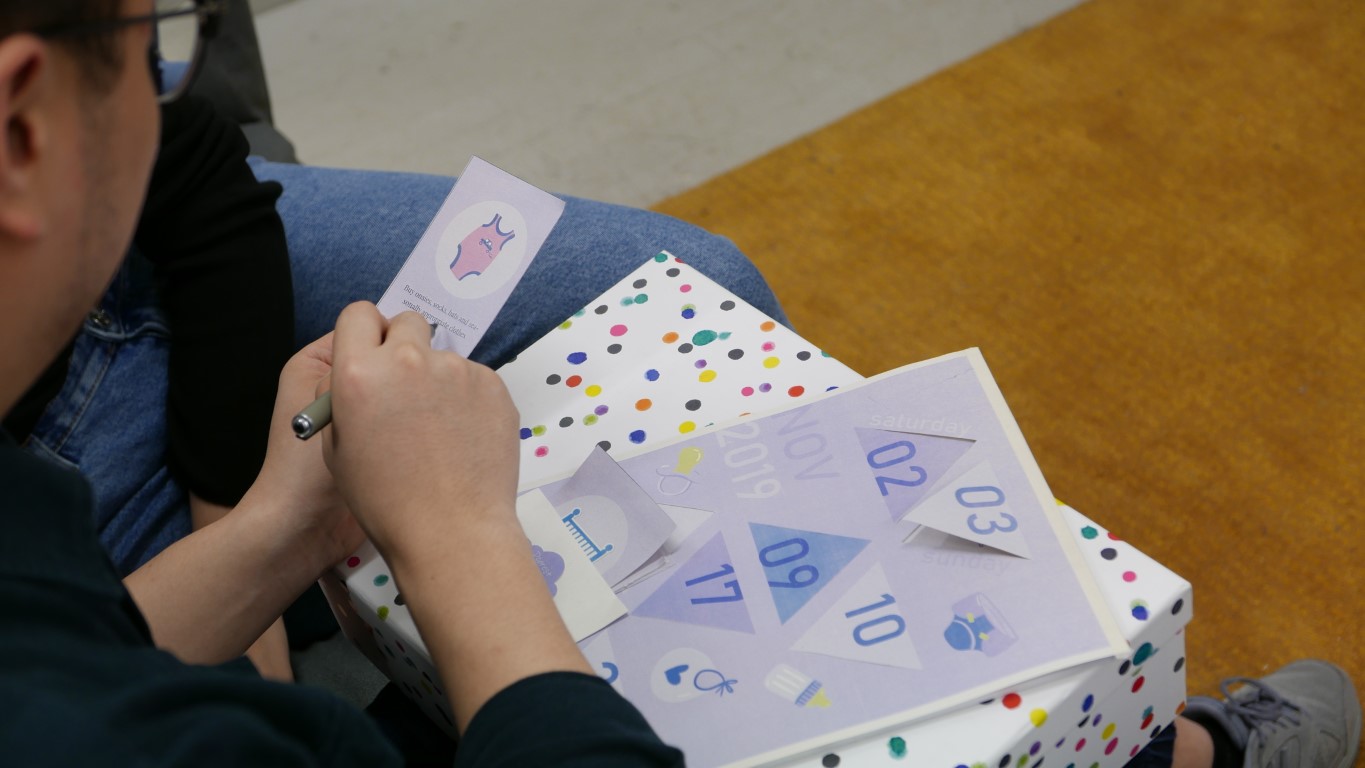
Dad guide
Guidance for new fathers encouraging them to look after themselves so they can look after their family.
This is targeted at the stories we were hearing about dads who often found themselves frazzled from having to juggle responsibilities as a parent. This guide aimed to give practical tips about how you might handle fatherhood when you’re short on sleep and time.
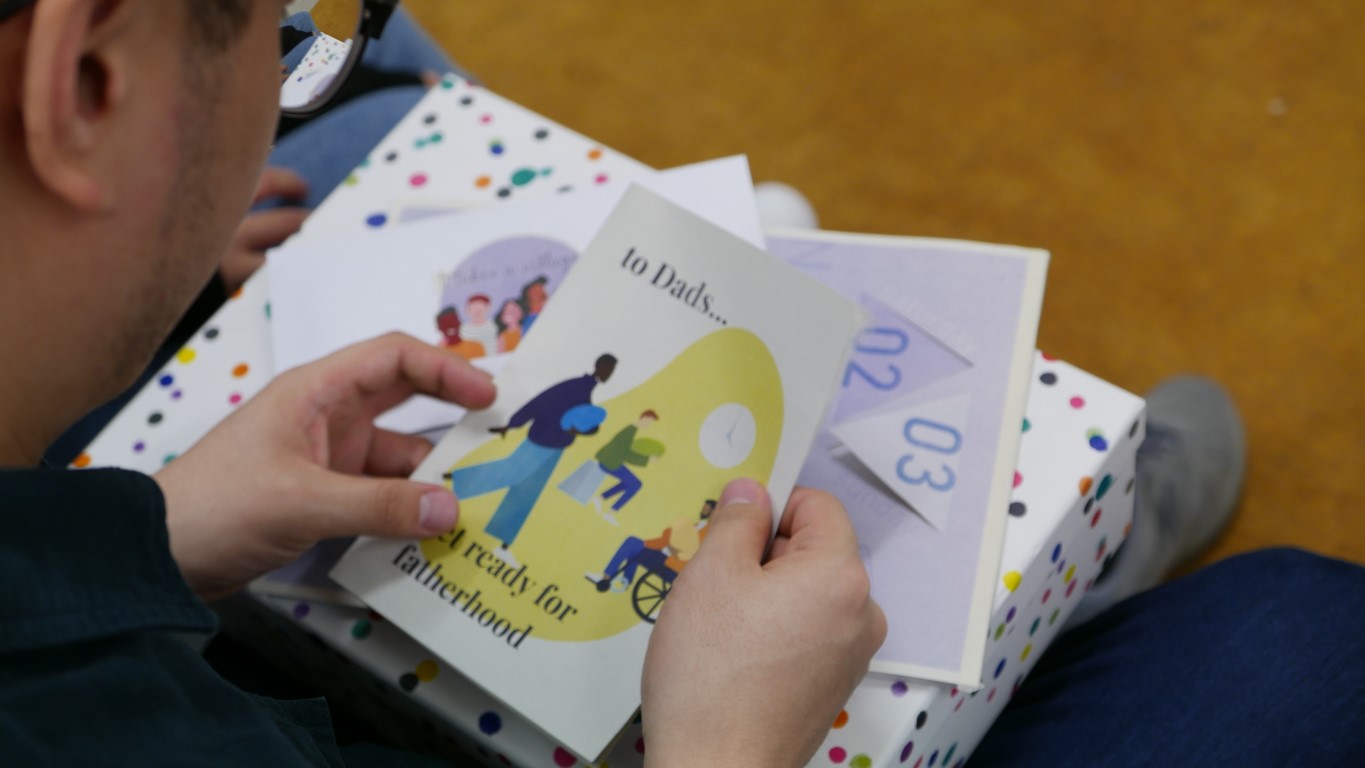
It takes a village
A contact sheet that asks you to map out people who can help in a time of need.
This sheet gives friends and family an opportunity to volunteer as we hear so many stories about the value of people helping with the basics. Having someone help with dishes or cooking a meal was so valuable in the early days of a baby being born.
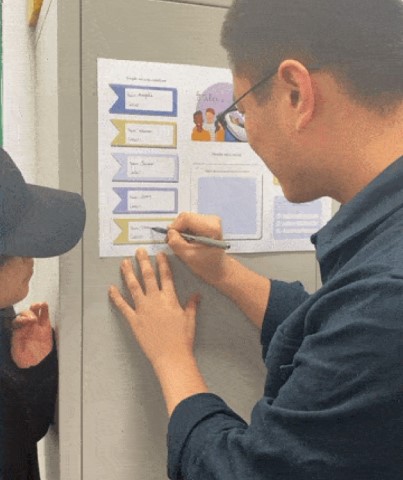
Village vouchers
A set of coupons you can give to people who you trust and might be kind enough to help you out around the house when the baby arrives.
These coupons can be picked up by friends and family to explicitly say “I’m here when you need me.” They feature a number of different tasks like shopping, hoovering and cooking.
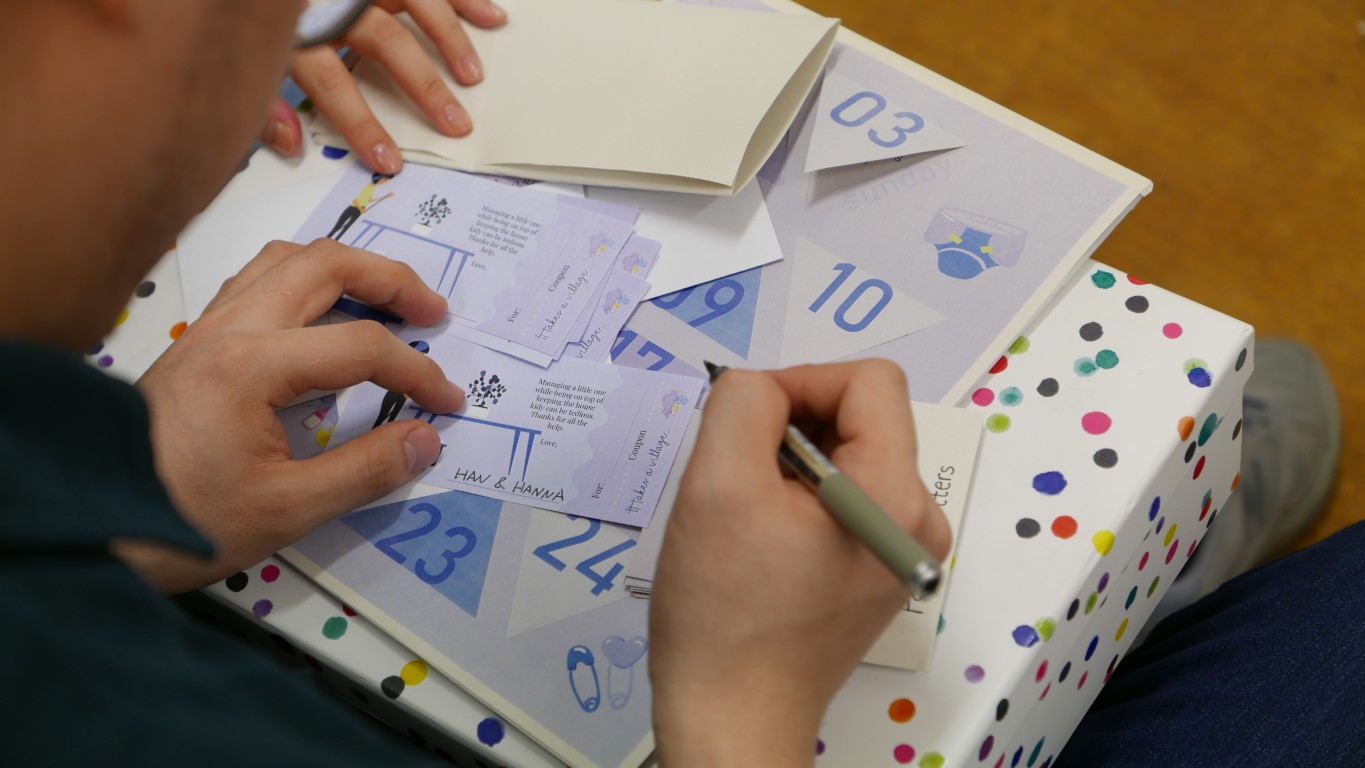
Calendar
All the relevant events that might be useful to a couple before the baby arrives.
As we discovered a number of different voluntary services and social enterprises that helped prepare dads, we wanted to amplify their events and make it easier to find things that might be useful to a new family.

Time capsule
A letter to write to yourself in the future. This is an opportunity to describe to yourself what kind of future you’d like and what kind of dad you’d like to be.
This was aimed at helping dads reflect before having a baby and offering an opportunity to reflect on what makes a good dad and what kind of role-models we might have to follow.

Extractivism and academia
We’ve shown the project to the groups who helped us with our research. They think it’s unlikely to be accessible or engaging to the people of their group as it didn’t reflect them, their values or activities they’d like to take part in. As dads they are time-short and are unlikely to take time out to write abstract letters.
This is really useful feedback and it confirmed some of the suspicions I had while conducting the project. Although I thoroughly enjoyed working with everyone who offered to help us, I couldn’t help but feel like whatever we would produce would be patronising. None of us were parents so we could only project based on research conducted in a fairly short time-frame.
We did as much as we could to share our findings and offer insights where we found them but the nature of fitting projects into a timed curriculum places the incentive to succeed in the wrong place.
In an ideal world, we would have been designing in partnership with these budding families so that we could target barriers designed by and for the people who needed barriers broken. We faced some scepticism in some of the sessions and the scepticism was earned because as soon as the project was over, we’d have to move onto another one.
That being said, I learned a huge amount from my team and the families we met. I learned about the importance of framing research, incentivising outcomes correctly and, of course, being a parent. A project like this requires vigilant reflexivity and conducting oneself with care. This project gave me the opportunity to work with an excellent team, meet the groups who were doing invaluable work and to develop a practice enriched with challenging experiences.